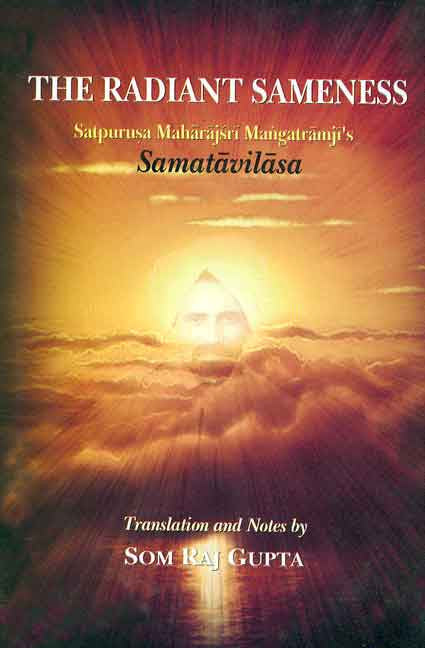The Radiant Sameness: Satpurusa Maharajsri Mangatramji's Samatavilasa
The Radiant Sameness: Satpurusa Maharajsri Mangatramji's Samatavilasa - Paperback is backordered and will ship as soon as it is back in stock.
Couldn't load pickup availability
Samatavilasa, The Radiant Sameness, shows the way of finding our fallen condition itself as redemptive. We are not merely to accept our pain and our mortal condition but to live these and become these. In becoming that pain lies our bliss, in living our mortality immortality. That alone is the highest bliss and absolute, that alone is salvation the final, this our becoming one with our mortal and absolutely tragic lot. That is what the state of samata, sameness, is. Only that man is a mukta, a liberated soul, who can look alike on Maya and Brahman, on reality and appearance, on bondage and liberation, on life and death, on misery and joy. Not that there is an actual state called the state of liberation, an actual bliss that is absolute and highest, for terms like 'absolute' and 'highest' turn out to be relative, and, therefore, misleading. Hypostatization of samata would not work, for all hypostatization is rooted in our narcissistic passion.
Yet Samatavilasa would not, in actual fact does not, encourage us to look alike on these opposites constitutive of our mortal being as long as we fight a desperate fight against our inevitable and destined fate, fate the mortal; a stern discipline we have to undergo before we can even think of samata, sameness, not to speak of living it. For, not before dying unto himself can a man look alike on these dualities, the stuff our mortal life and being are made of. Mere theoretical deconstruction of these opposites will not do; he must live the uncertainty that he is as a [no-] being placed between these opposites, between the given condition and the transcendental urge in us, between the past and the present, between oneself and one's other, between life and death. And to accept and live this his unhappy condition, he has to have the humility to become mere passive witness of these ever recurring deadly tensions and conflicts within him, to stand apart from these as if these latter were mere events happening before him and not in him. He has to, in other words, cease to be the doer, accepting all the uncertainty that goes with his being as a mortal, as a creature uncertainly placed between the two poles of birth and death. But not before dying before his actual death can he have the patience, the patience all passive, to live his mortality and be his mortality, undoing thereby both birth and death and what lies between the two, his so called life.
Review(s)
About the Author(s)
-
Pages
-
Edition
-
Size
-
Condition
-
Language
-
Weight (kg)
-
Publication Year
-
Country of Origin
-
Territorial Rights
-
Reading Age
-
HSN Code
-
Publisher




